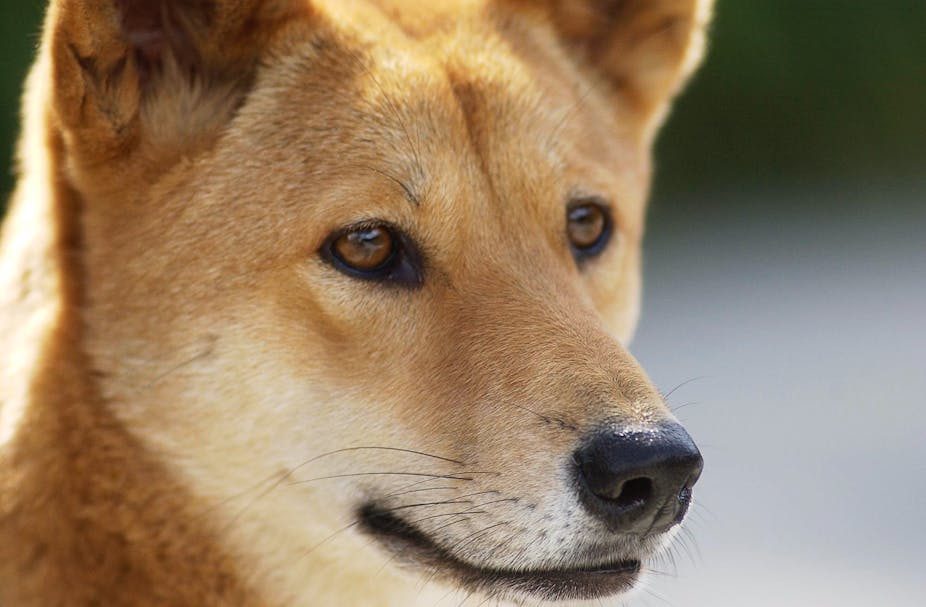It’s the dry season in the Northern Territory, and for many people that means camping under a clear winter’s sky in the Top End. Yet rediscovering nature can be a fraught exercise in wilderness areas like Kakadu, especially when the tourist trail cuts right through the territory of native animals.
This was graphically highlighted with another frightening dingo incident at the Aurora Kakadu Lodge just over a week ago. This time a 13 year old girl woke to find she was being dragged in her sleeping bag from underneath the awning of her caravan by a dingo. This is apparently the fourth disturbance at the campsite this dry season, with dingoes previously ripping apart tents and destroying bedding.
Comparisons have already been made with the death of Azaria Chamberlain three decades ago, with the mother telling the NT Times that she “can totally understand how this can happen.” Dingoes are a national icon, and one that we should rightly respect. Wild animal behaviours often conflict with humans, especially apex predators (those at the top of the food chain) like dingoes. Yet as dingoes seem to be returning to this one campsite, it’s clear something needs to be done.
Violence is not the answer

I would strongly argue that violence is not the answer here. The alternatives to coexisting with dingoes are poisoning, trapping, or shooting, and other animals and pets will be just as susceptible to these aggressive and often lethal techniques as the dingoes. Human injuries from dingoes are extremely rare in comparison with domesticated dogs, and they are usually preventable if people are informed about living in dingo territory. Education is the answer. If we want to continue to visit their habitats, we owe it to them to understand how they behave and what we can do to co-exist peacefully.
My American colleague Camilla Fox, founder of Project Coyote, makes a strong case to not only resolve conflict with native apex predators, but to encourage coexistence between them and us. She believes we must first give the community a reasonable and realistic understanding of dingo behaviours and dingo danger, which in turn will change the form of interactions with us.
The first thing we must remember is to never feed dingoes. Nature wants us to appreciate them from a distance, as their life and our safety depend on dingoes remaining wild and naturally wary of people. For this reason it is essential to pick up trash, secure garbage, and feed any pets inside to remove the allure of them infringing on our camps.
The dry season in the Northern Territory coincides with the whelping and pup rearing season, and at this time of year it’s particularly important not to attract attention by leaving food unsecured. Some dingoes may see it as an opportunity to establish a new territory because food resources are readily available. It’s also crucial to avoid areas where dingoes may either have a den or be feeding pups - in this case, we need to know whether there’s a pack nearby, and what steps can be taken to ensure they are not disturbed by humans. Dingoes form packs to secure access to enough food and resources to survive. If we stop allowing them access to our food and resources, then they will not associate food with people, and they won’t form packs near our campsites.
Some dingoes traditionally followed indigenous camps before Europeans arrived, and acted as a cleaner or sanitiser. If Aborigines left any bones or other food scraps behind, the camp dingoes would scavenge them. Did Aborigines get attacked too? I’d like to think that they knew how to manage the wilderness situation, unlike common city dwellers looking for a desert adventure.
Techniques for keeping wild dogs away
In 2011 I studied sustainable carnivore management around the world as part of my Winston Churchill Memorial Trust Travel Fellowship to learn ways to help facilitate coexistence with wild dogs. Most tools being used by international institutions were technique to make the wolves, African wild dogs or the coyotes keep their distance. Some that could be used in Australia include:
Playing a recording of a wolf-pack howling to mimic an already resident pack;
Using scent marks (dog urine and faeces) to establish a false wild dog territory;
Bright red “fladry” tape hanging from ropes that flutters in the wind.
Human-dingo conflicts should in theory be less common if we can combine these techniques whilst ensuring we don’t feed dingoes, remove attractants such as garbage and pet food, keep pets in a secure environment and don’t let them roam, and - if a dingo is investigating your campsite - be “Big, Bad and Loud!”
Dingoes are more than simply another Australian icon; they play an important role in protecting diversity in our ecosystem by limiting the number of prey and keeping the competition in check.
By following these simple tips and keeping your campsite clean, not only will you keep you and your family safe, you’ll be ensuring dingoes can continue to protect our bio-diversity too.
Comments welcome below.

